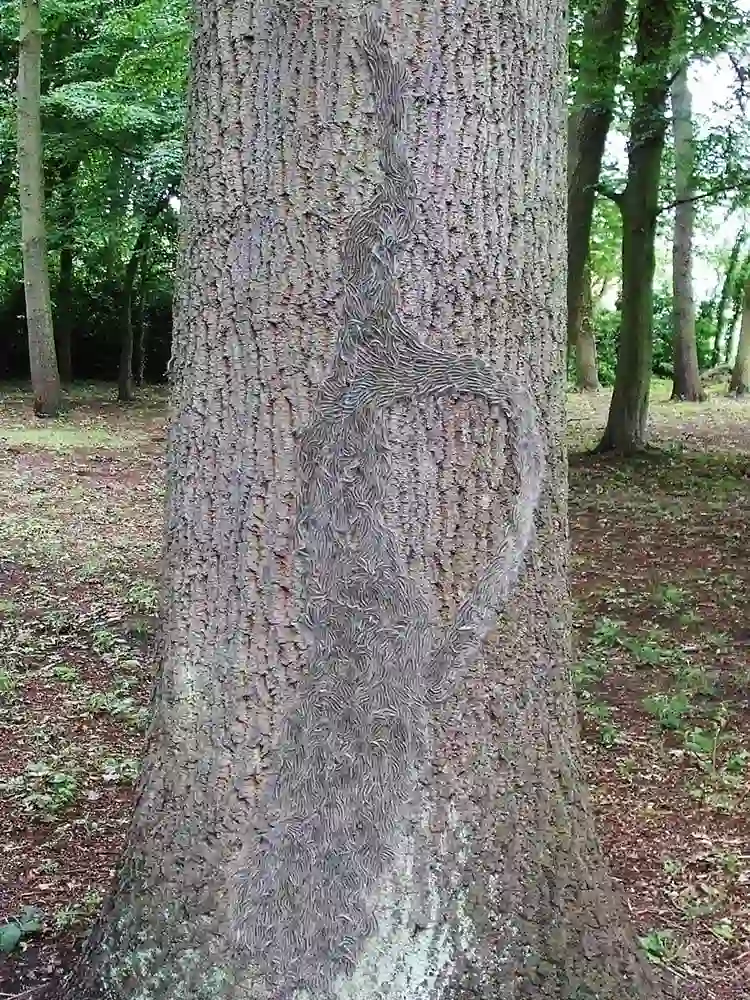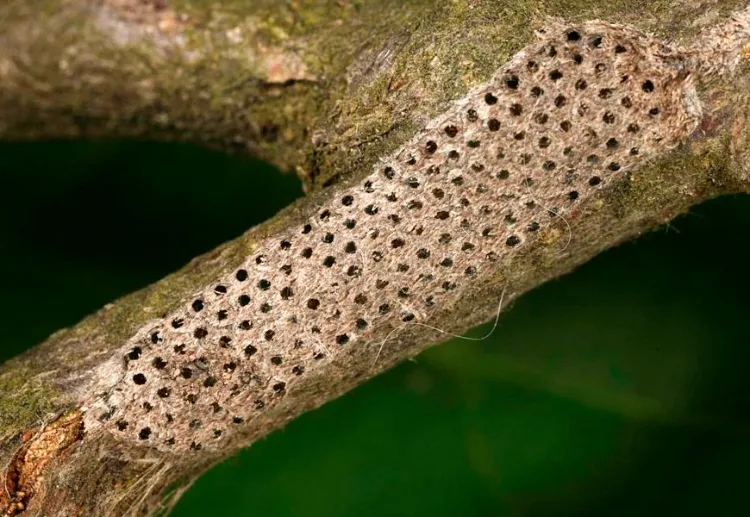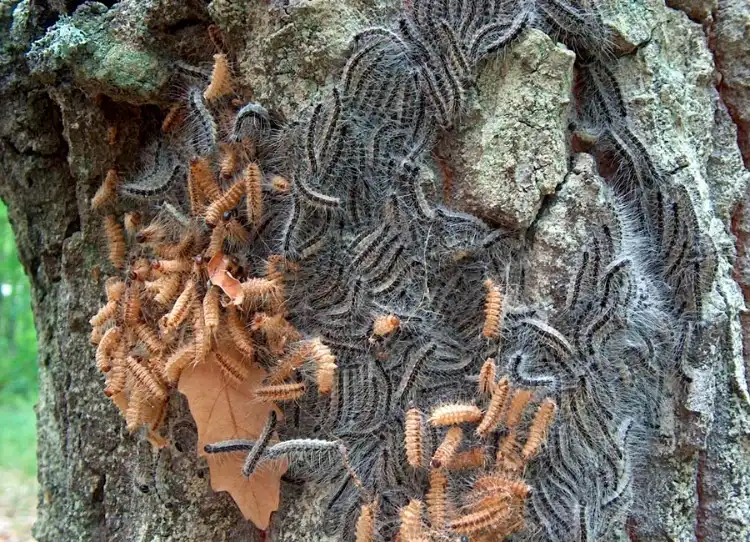Oak processionary moths are probably the most feared caterpillars at the moment – with good reason, actually, because the caterpillars can trigger allergies and spread quickly. It is all the more important that you can recognize an oak processionary moth nest. We explain what you should pay attention to and which trees are actually infested.
Recognizing the oak processionary moth’s nest: the most important questions
Oak processionary moths are a hazard to animal and human health. The caterpillars Thaumetopoea processionea have hairs that contain a dangerous protein. If it comes into contact with the skin or eyes, it can cause breathing difficulties and allergic reactions. The populations of the pest have increased across Europe in recent years. Since the oak processionary moth has no natural predators in this country, combating the invasive insect species is very important. That’s why everyone should find out exactly what the caterpillars and especially their nests look like.
What do oak processionary moths and their nests look like?

The EPS caterpillars can easily be confused with other non-poisonous caterpillars – they are hairy and yellowish in color with a dark brown top line. Unlike native caterpillars, the caterpillars move in large processions. Such a procession could be seen both on oak trees and on the ground – when the caterpillars leave their nest to infest another tree. The caterpillars feed exclusively on the oak leaves.

The oak processionary moth nest is white and hangs either on a leafless branch or on the trunk of a tree. The pests do not make their nests between the oak leaves. The nest shape adapts to the tree conditions – sometimes the nest looks hemispherical, sometimes teardrop-shaped. In some cases it looks like a spider web – big and flat. If it gets too heavy, it may fall on the ground.

The nest provides shelter for the caterpillars during the day. They are nocturnal and forage for food after sunset. From mid-July, the nest houses the pupated larvae. From about mid-August (depending on the weather conditions, the times may vary) the moths fly away and then lay their eggs on new oak trees.

When can you see the nest of poisonous caterpillars?
The nest can be seen from June to autumn. Abandoned nests can fall to the ground. The rest can also stick to the tree in winter. From around the beginning of August you can also see the new eggs on the bark of the affected trees.
Oak processionary moth nest: Confusion with cobwebs of other moths possible
Especially when you look at the nest and its many atypical shapes, there is a risk of confusion with other moths. However, the nest of the poisonous caterpillars is only on oak trees or directly on the ground under the tree. Even if other shrubs grow under the tree – they are not attacked by the caterpillars and no nests are built there. The EPK nests are often confused with the cobwebs of the spider moth – the latter infesting various tree species, including apple trees, and forming their webs on the leaves.
Is the oak processionary moth nest only found on oak trees?

Yes, the nest of the oak processionary moth can only be found on oak trees. In some cases it can fall off the tree and then be seen directly under the tree. The pests never nest on fruit trees and are almost never found on fences or other man-made structures. So if you spot a spider web or a nest just under the roof, those aren’t oak processionary moths.
Oak processionary moth nest on ground
Can you find an oak processionary moth nest on the ground? The answer is yes, you can – but make sure the nest is really under an oak tree.
Old vs. new nest
Whether it is a new or old nest depends mostly on when you saw it. Abandoned nests fall from the trees and can then be found from mid-August. New nests are built primarily in early summer and then remain on the trees until early August.
Oak Processionary Moth Nest Found: What Should You Do?

You have found an oak processionary moth nest and are now wondering what to do. The first thing to do is remember the exact spot and then carefully walk away. Never leave pets and children near the nest. There is currently no obligation to report, but you should still contact the local health department. Because such a nest is dangerous and should be removed by professionals. Even if it is a nest on your own property.
Report the nest and have it removed
You can report the nest to the public order office, health department or green space office. Where you call first depends mostly on where you saw the nest. Do not touch or try to destroy the nest. In any case, do not throw away old nests in the trash.
